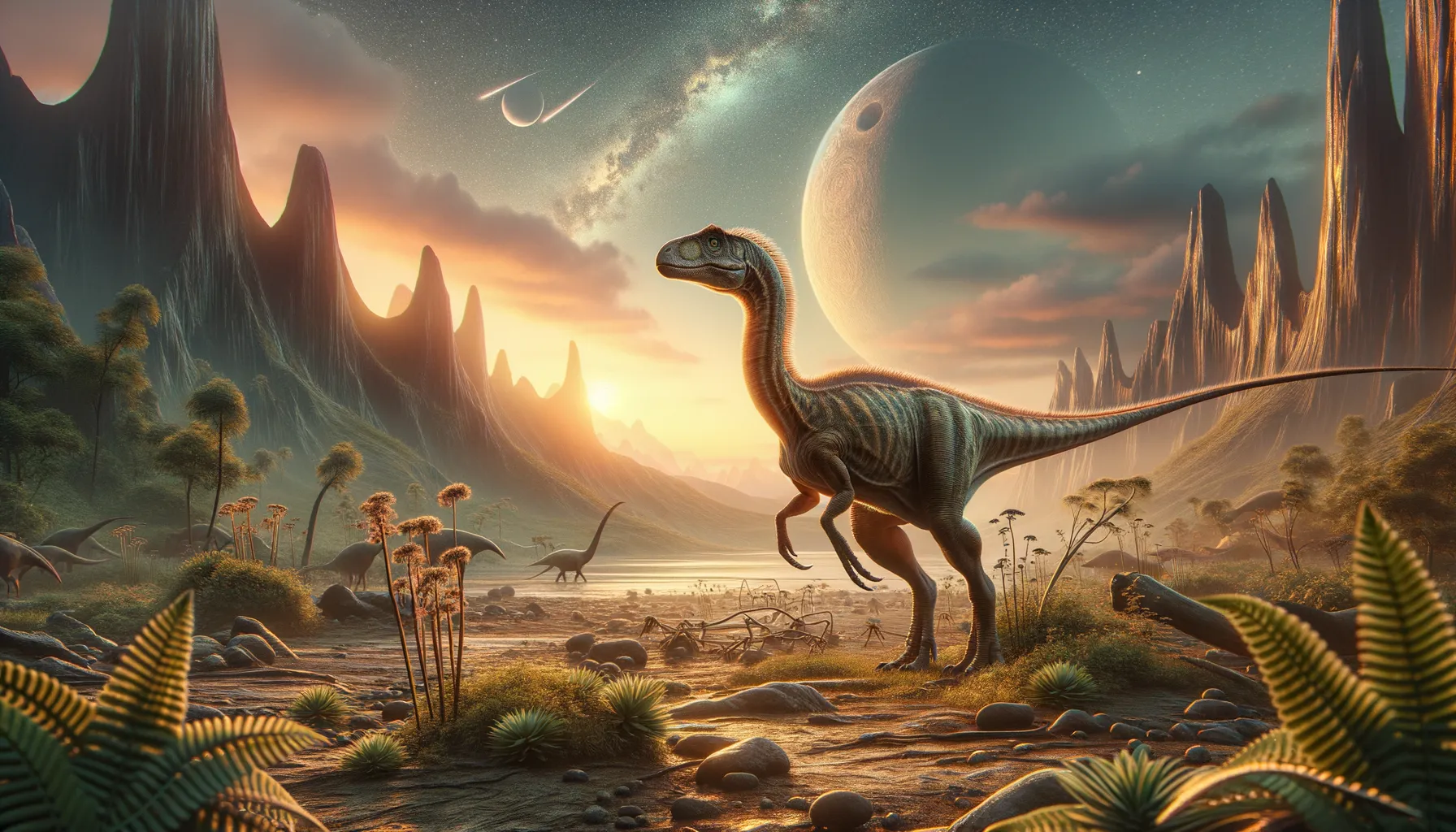
Saturnalia
Early agility on ancient lands!
Period
Triassic
Length
Grew up to about 1.5 meters long.
Height
Reached up to about 1 meter tall.
Weight
Weighed approximately 10 to 20 kg.
Saturnalia was a small, agile dinosaur that lived during the Late Triassic period, over 200 million years ago. It was one of the first dinosaurs, showcasing early characteristics that would be seen in later species. Known for its lightweight frame, Saturnalia had a long neck and tail and was likely herbivorous or omnivorous, feeding on plants and possibly small insects.
Diet
Saturnalia primarily consumed plant material, which suggests it was mainly herbivorous. However, the possibility exists that it may have incorporated small insects or other small creatures into its diet, mirroring the dietary flexibility seen in some early dinosaurs.
Hunting
Saturnalia was not a hunter in the traditional sense, but rather a forager. With its swift movements, it likely relied on speed to nip plant material or catch small, slow-moving insects and other invertebrates.
Environmental challenges
Surviving in the Triassic period posed several challenges, including the competition for resources with other herbivorous dinosaurs and early mammals. Seasonal changes in vegetation could also have forced Saturnalia to adapt its feeding strategies. Additionally, the evolving predator dynamics meant it had to be constantly vigilant to avoid larger predators.
Speed
Moved quickly on its hind legs.
Lifespan
Estimated to live around 10 to 20 years.
First discovery
First discovered in Brazil in 1998.
Fun Facts
- Saturnalia was a small dinosaur, only about 1.5 meters long, which is roughly the size of a large dog.
- It lived during the Late Triassic period, around 225 million years ago, which makes it one of the oldest known dinosaurs.
- Saturnalia was a herbivore, meaning it mainly fed on plants, which it could reach easily thanks to its small size.
- The name 'Saturnalia' was inspired by an ancient Roman festival, because the first fossils were discovered during that festive season.
- Saturnalia is believed to have had a long neck, which helped it reach vegetation that was higher up.
- The fossils of Saturnalia have been found in Brazil, providing important information about early dinosaur life in South America.
- Despite its age, Saturnalia's bones show that it was a very advanced dinosaur for its time.
Growth and Development
Saturnalia likely hatched from eggs and underwent rapid growth during its juvenile phase to reach maturity quickly. This growth strategy would have helped it avoid predation. As it matured, its bones strengthened, reducing growth rates and marking a shift to an adult lifestyle. This quick growth, characteristic of early dinosaurs, helped it survive in a competitive environment.
Habitat
Saturnalia lived in what is now Brazil, which during the Triassic, was a semi-arid region with seasonal variations, providing a mix of lush green periods and dry spells. The varied habitat supported a range of flora and fauna, allowing Saturnalia to exploit its immediate environment for both food and shelter. It likely thrived in open areas where it could take advantage of its agile movement.
Interaction with other species
Living among diverse vertebrates, Saturnalia interacted with other dinosaur species, early mammals, and reptiles. These interactions were likely centered around competition for food and resources. Its small size meant it was generally not a threat to larger creatures, potentially adopting some form of herd behavior for protection.
Natural lifespan
In the wild, its lifespan could reach up to 20 years.
Reproduction
Reproduction involved laying eggs, as seen in later dinosaurs. The eggs were likely laid in nests, where the young could safely develop before hatching. Parental care might have involved guarding the nest or young, though evidence for this is speculative.
Social behaviour
Saturnalia may have exhibited some degree of social behavior, possibly traveling in small groups for protection against predators. This social structure would have allowed for communal foraging, offering safety in numbers and helping to regulate group access to food and resources.
Fossil locations
Fossils of Saturnalia have predominantly been found in southern Brazil, a region offering rich insight into the Triassic period's ecosystems. These discoveries highlight the early diversity of dinosaur life in what was then part of the ancient supercontinent Gondwana. The preservation of these fossils has provided crucial information about early dinosaur evolution.
